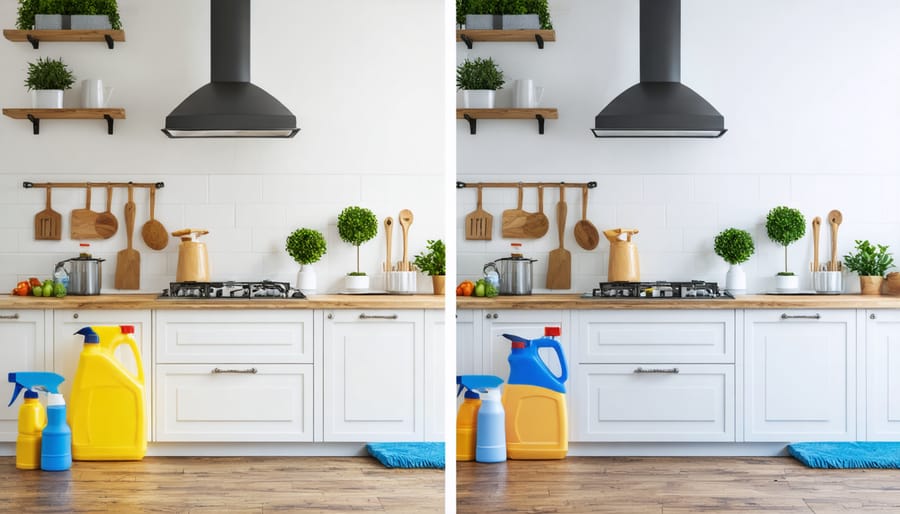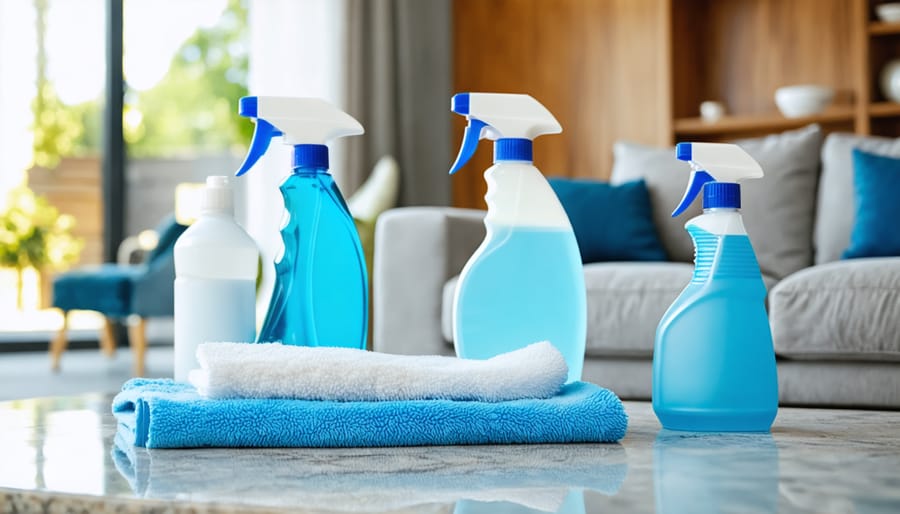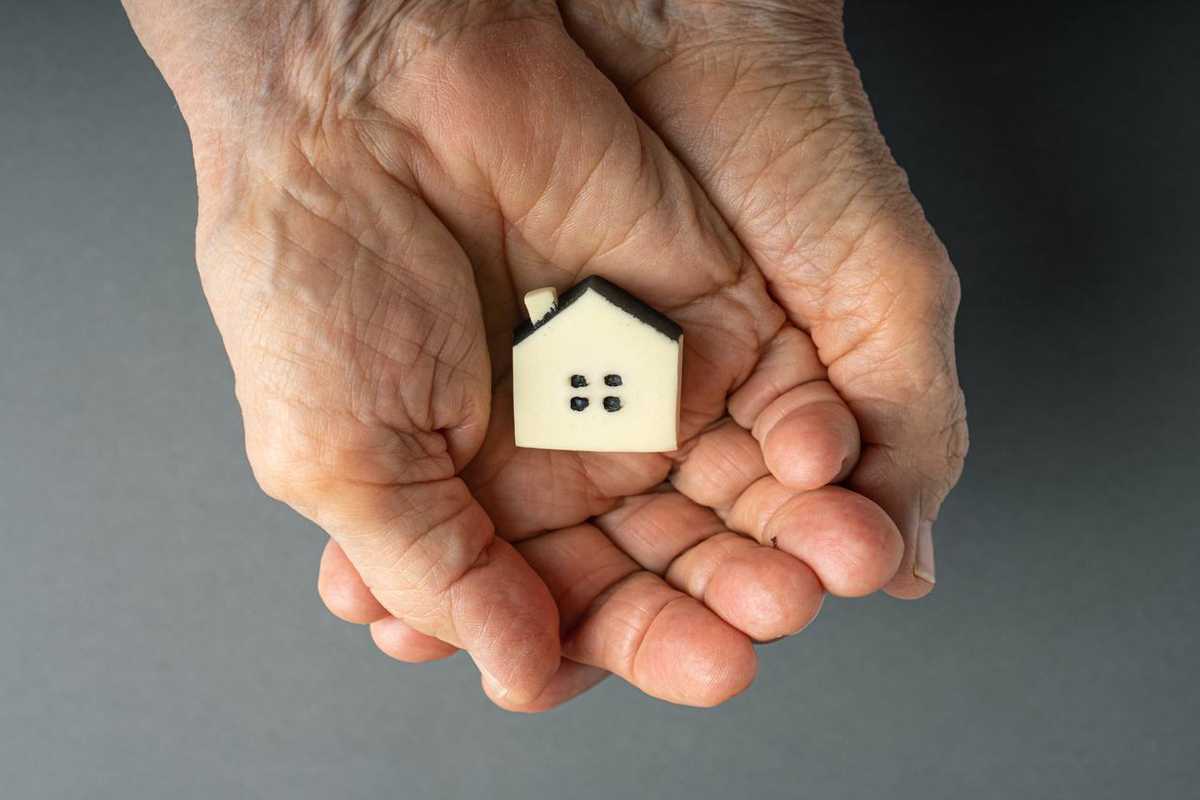Professional Home Staging Cleaning Supplies That Make Properties Shine
Transform your home staging success with professional-grade cleaning supplies that maximize property appeal when selling your property. Leading suppliers like Mustang Hygiene recommend a core arsenal of commercial-quality microfiber cloths, hospital-grade disinfectants, and streak-free glass cleaners for showcasing homes at their absolute best.
Professional home stagers understand that immaculate presentation directly impacts buyer perception and sale prices. Beyond standard household cleaners, staging-specific supplies include specialized solutions for hardwood floors, stainless steel appliances, and natural stone surfaces that photograph exceptionally well during virtual tours and in-person showings.
Strategic investment in premium cleaning tools – from high-powered vacuum cleaners to eco-friendly degreasers – ensures consistent, showroom-ready results across multiple properties. These commercial-grade products not only deliver superior cleaning power but also reduce preparation time and labor costs, making them essential assets for real estate professionals and home sellers focused on maximum return on investment.

Essential Commercial-Grade Cleaning Products for Home Staging
Surface Cleaners and Disinfectants
For effective home staging, stock up on high-quality surface cleaners and disinfectants that can tackle various materials safely and effectively. Start with an all-purpose cleaner for general cleaning tasks – look for pH-neutral formulas that won’t damage delicate surfaces. For kitchen and bathroom surfaces, choose a commercial-grade disinfectant that eliminates bacteria while leaving a streak-free finish.
Keep specialized cleaners on hand for specific materials: wood cleaner for hardwood floors and furniture, glass cleaner for windows and mirrors, and stone cleaner for granite or marble countertops. These targeted solutions ensure optimal results without risking damage to expensive surfaces.
Don’t forget about stainless steel appliances – use a dedicated stainless steel cleaner to remove fingerprints and restore shine. For carpet and upholstery spot cleaning, invest in an enzyme-based cleaner that breaks down organic stains and odors.
Always test cleaners on a small, inconspicuous area first, and keep natural alternatives like vinegar and baking soda solutions available for environmentally conscious buyers. Remember to check product labels for proper dilution ratios and safety instructions before use.
Glass and Mirror Cleaning Solutions
For sparkling windows and mirrors that catch natural light and make spaces appear larger, invest in professional-grade glass cleaning solutions. Commercial glass cleaners like Sprayway or Invisible Glass offer superior streak-free results compared to household varieties. Always pair these solutions with high-quality microfiber cloths or lint-free newspapers to prevent streaking and lint residue.
A professional-grade squeegee is essential for larger windows and glass doors. Look for brands like Unger or Ettore, which feature replaceable rubber blades for consistently clean results. For mirrors, avoid ammonia-based products as they can damage protective backings over time.
Keep a supply of fine-mist spray bottles to apply cleaning solutions evenly. For stubborn spots or fingerprints, keep a bottle of concentrated glass cleaner on hand. Don’t forget to clean window tracks and frames – a detail that buyers notice. For high windows or mirrors, invest in an extension pole with appropriate attachments to ensure every surface sparkles from top to bottom.
Floor Care Products
For hardwood floors, invest in a high-quality pH-neutral cleaner that won’t strip the finish, along with a microfiber mop system for streak-free results. Laminate floors require specialized cleaners that won’t leave residue or damage the protective layer – avoid excess water which can cause warping.
When dealing with carpet, a commercial-grade carpet cleaner and stain remover are essential. Look for enzyme-based solutions that break down deep-set stains and eliminate odors. For tile and grout, choose an alkaline cleaner that cuts through built-up grime, paired with a sturdy brush for grout lines.
Natural stone floors need gentle, non-acidic cleaners specifically formulated for marble, granite, or slate. For vinyl and linoleum, opt for pH-neutral cleaners that restore shine without leaving a sticky residue. Remember to always test new products in an inconspicuous area first, and keep a selection of floor-specific cleaning pads and mop heads on hand for different surfaces.
Professional Cleaning Tools and Equipment
Microfiber Cleaning Systems
Microfiber cleaning systems are the cornerstone of professional home staging, offering superior cleaning performance that’s essential when preparing an inherited house for sale or staging any property. These systems typically include color-coded cloths and mops designed for specific surfaces and tasks.
The key components of a professional microfiber system include:
– Ultra-fine dusting cloths for delicate surfaces
– Glass and mirror cloths that leave streak-free finishes
– All-purpose cleaning cloths for general surfaces
– Heavy-duty scrubbing cloths for tough spots
– Microfiber mops with interchangeable heads
What sets microfiber apart is its ability to trap dust, dirt, and bacteria without requiring excessive cleaning solutions. The tiny fibers create a static charge that attracts and holds particles, making them significantly more effective than traditional cleaning materials.
For best results, maintain separate cloths for different areas (kitchen, bathroom, general living spaces) to prevent cross-contamination. Invest in professional-grade microfiber with at least 200,000 fibers per square inch for optimal cleaning power. These systems are not only efficient but also environmentally friendly, as they reduce the need for chemical cleaners and paper towels.

Specialized Cleaning Tools
When it comes to professional home staging, having the right specialized cleaning tools can make all the difference in achieving that pristine, show-ready finish. A telescoping duster with microfiber attachments is essential for reaching high corners, ceiling fans, and crown molding without leaving any traces of dust. For deep carpet cleaning, consider investing in a commercial-grade extractor that removes embedded dirt and refreshes fibers to their original appearance.
Window cleaning becomes effortless with a professional-grade squeegee system, complete with extension poles for those hard-to-reach exterior panes. A steam cleaner with various attachments proves invaluable for sanitizing and refreshing upholstery, curtains, and grout lines without harsh chemicals.
Don’t overlook the importance of specialized brushes, such as grout brushes, detail brushes for fixtures, and radiator brushes for those often-forgotten spaces. A high-quality HEPA vacuum with attachments designed for different surfaces ensures thorough cleaning of baseboards, stairs, and tight corners.
For stubborn spots and stains, keep a selection of specialized cleaning tools like melamine foam erasers, grout pens, and detail scrubbers. These professional-grade tools might cost more initially but deliver superior results that can significantly impact a property’s presentation and ultimate selling price.
Storage and Organization Solutions
Keep your home staging cleaning supplies organized and easily accessible with a systematic storage approach. Use clear, stackable containers to categorize supplies by room or purpose, and label everything clearly to save time during the staging process. A portable cleaning caddy is essential for moving efficiently between rooms, holding frequently used items like glass cleaner, microfiber cloths, and all-purpose sprays.
Install adjustable shelving in a dedicated closet or laundry room to maximize vertical storage space. Store heavy items at waist level to prevent strain, and keep potentially hazardous chemicals on higher shelves away from children and pets. Consider using drawer organizers or small bins to separate sponges, cloths, and brushes.
Create a cleaning supply inventory checklist and mount it inside your storage area. This helps track when items need replacement and ensures you’re always prepared for staging appointments. For frequently staged properties, maintain separate sets of supplies for each location, stored in clearly marked totes for quick transport.
Implement a “first in, first out” rotation system for products with expiration dates, and regularly assess your supplies to dispose of expired or unused items properly.
Room-by-Room Cleaning Supply Checklist
Kitchen and Bathroom Essentials
When preparing kitchens and bathrooms for home staging, it’s essential to use commercial-grade cleaning supplies that deliver professional results. These high-traffic areas require special attention as they significantly influence buyers’ impressions.
For kitchens, start with a heavy-duty degreaser to tackle accumulated cooking residue on cabinets, backsplashes, and appliances. Choose a professional-grade all-purpose cleaner with natural orange oil for effective grease cutting without harsh chemical odors. A specialized stainless steel cleaner is crucial for achieving that showroom-worthy shine on appliances.
In bathrooms, focus on products that eliminate soap scum, hard water stains, and mildew. A commercial-grade bathroom cleaner with mold-inhibiting properties is essential. Invest in a professional lime and calcium remover for fixtures and glass shower doors. Don’t forget a quality toilet bowl cleaner that removes stains and mineral deposits.
For both areas, keep these essential tools on hand:
– Microfiber cloths for streak-free surfaces
– Heavy-duty scrub brushes
– Non-scratch scouring pads
– Extension poles for hard-to-reach areas
– Grout brushes for detailed cleaning
Remember to choose products with neutral or light fresh scents, as strong chemical odors can be off-putting to potential buyers. Always test cleaning products on a small, inconspicuous area first to ensure they won’t damage surfaces. Keep these supplies separate from regular household cleaners to maintain their professional-grade effectiveness.

Living Areas and Bedrooms
For living areas and bedrooms, maintaining a pristine appearance is crucial, especially when staging condos for sale or showcasing larger homes. Start with a high-quality microfiber duster set for reaching ceiling fans, light fixtures, and baseboards without leaving residue. A professional-grade vacuum with HEPA filtration is essential for deep-cleaning carpets and upholstery, while a steam cleaner can refresh fabric surfaces and remove stubborn stains.
Keep glass cleaner and lint-free cloths handy for mirrors, picture frames, and window surfaces. Anti-static furniture polish helps maintain wooden surfaces while repelling dust, making staged rooms stay cleaner longer. For bedrooms, invest in a mattress refresher spray and fabric deodorizer to ensure spaces smell fresh and inviting.
Don’t forget specialized tools like extendable cobweb dusters for high corners and ceiling edges. A good supply of microfiber cleaning cloths in different colors helps prevent cross-contamination between surfaces. For quick touch-ups between showings, keep an electrostatic floor mop and furniture wipes readily available.
Remember to stock up on gentle, unscented all-purpose cleaners that won’t overwhelm potential buyers with strong fragrances. These living spaces should feel clean and welcoming without any harsh chemical smells that might distract from the home’s natural appeal.
Cost-Effective Purchasing Strategies
Bulk Buying Benefits
When it comes to cost-effective home staging, buying cleaning supplies in bulk can significantly reduce your expenses while ensuring you never run short during crucial staging preparations. Wholesale purchases often result in savings of 20-30% compared to retail prices, making it a smart investment for regular home stagers.
Consider joining wholesale clubs or establishing relationships with commercial cleaning supply distributors. Many offer business memberships that provide access to professional-grade products at discounted rates. Focus on purchasing frequently used items like all-purpose cleaners, glass sprays, and microfiber cloths in larger quantities.
To maximize bulk buying benefits, create a detailed inventory system to track usage and prevent overbuying. Store supplies properly in a cool, dry place to maintain their effectiveness. Share bulk purchases with other stagers or real estate professionals to split costs and minimize storage needs. Remember to compare unit prices rather than package prices to ensure you’re getting the best value, and watch for seasonal sales when suppliers often offer additional discounts on larger orders.
Where to Source Supplies
For professional-grade home staging cleaning supplies, several reliable sourcing options are available. Major home improvement retailers like Home Depot and Lowe’s offer comprehensive selections of cleaning products and tools at competitive prices. These stores often provide bulk purchasing options, which can be cost-effective for regular home stagers.
Professional cleaning supply distributors, such as Grainger and HD Supply, specialize in commercial-grade products and frequently offer wholesale pricing. These vendors typically provide detailed product information and expert guidance for specific cleaning challenges.
Online marketplaces like Amazon Business and Uline have become increasingly popular for sourcing cleaning supplies, offering convenient delivery and competitive pricing. Many of these platforms provide business accounts with additional benefits, including quantity discounts and scheduled deliveries.
Local janitorial supply stores are another excellent resource, offering personalized service and expert product recommendations. These establishments often carry professional-grade products not readily available in retail stores and can provide valuable advice on proper product usage and applications.
For eco-friendly and specialized cleaning products, consider suppliers like Green Cleaning Products LLC or EcoLogic Solutions, which focus on environmentally conscious cleaning solutions perfect for modern home staging needs.
Professional cleaning supplies are the backbone of successful home staging, playing a crucial role in creating that pristine, move-in ready appearance that buyers crave. By investing in quality cleaning products and tools, you’re not just cleaning a space – you’re crafting an environment that speaks to potential buyers’ desires for a well-maintained home.
Remember that the right cleaning supplies do more than just remove dirt; they help create the perfect first impression, eliminate odors, and highlight your property’s best features. From eco-friendly all-purpose cleaners to specialized surface treatments, each product in your staging toolkit contributes to the overall success of your presentation.
The impact of proper cleaning supplies extends beyond aesthetics. Professional-grade products help protect your investment by safely maintaining different surfaces while ensuring the home remains in top condition throughout the showing period. They also save time and effort by delivering superior results with fewer applications, making them a cost-effective choice in the long run.
As you prepare your property for the market, consider your cleaning supplies as essential marketing tools. Just as professional photographers use quality equipment to capture your home’s best angles, professional cleaning supplies help showcase your property’s true potential. By maintaining high cleaning standards with the right products, you’re not just selling a house – you’re selling the promise of a fresh start in a perfectly maintained home.










